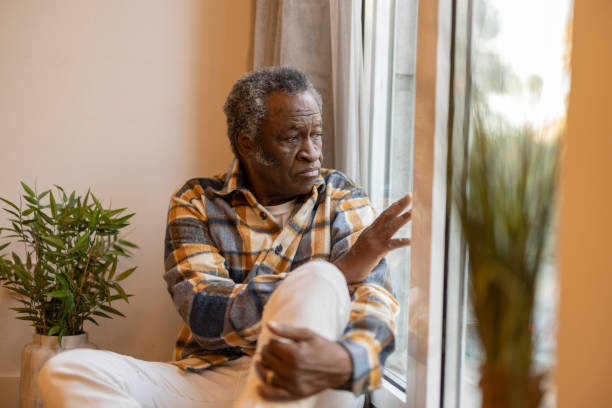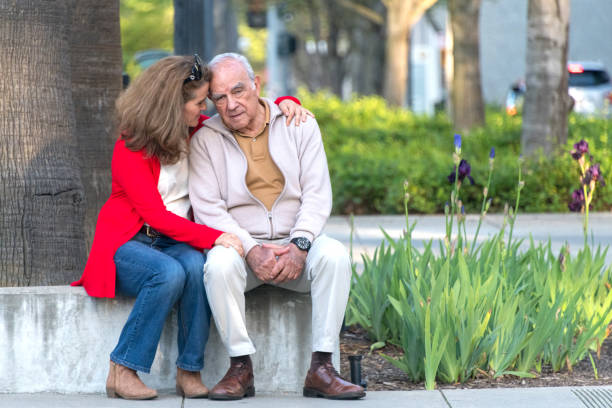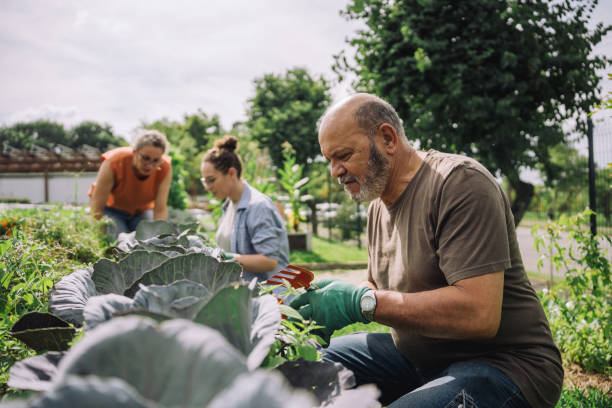Seasons of Connections:
Restoring Purpose and Belonging in Aging
Author: Dr. Julie. Sorenson, DMFT, MA, LPC
The Grief Connection
Grief is a natural part of life, but it can intensify loneliness if left unspoken. It doesn’t always look like tears; sometimes grief shows up as fatigue, withdrawal, irrational thoughts, or irritability.
Naming grief is healing. Healing isn’t always linear; sometimes it’s messy. This may mean:
- Talking openly about loss rather than holding it inside.
- Finding support groups, counseling, or trusted friends to share the stress.
- Understanding that there are stages in grief. And everyone grieves differently and in their own timeline.
Grief reminds us of the depth of our love and connection. By naming it and sharing it, we open the door to healing. A sense of renewed hope and comfort can be felt if you allow yourself to be vulnerable about how you are feeling, because you aren’t alone…., others are also feeling this, and normalizing can make you not feel like you are on an island.
Finding Hope and Connection
Aging is a journey filled with wisdom, memories, and meaningful milestones. It also brings advanced challenges and unforeseen changes. Some of these shifts are expected, while others come out of the blue. For many seniors, one of the quietest yet most painful endeavors is solitude and social isolation.
Seclusion is not just about being alone; it’s about feeling unseen, unheard, disconnected or invisible. It can weigh heavily on the mind, body and soul, sometimes more than we can comprehend. That’s why it is so crucial for individuals, families, and communities to discuss this topic with compassion, respond with care, and stop the stigma.
Why Loneliness Matters
Isolation is far more than an uncomfortable feeling. Research shows that chronic loneliness can be as harmful to health as smoking 15 cigarettes a day (Holt-Lunstad, 2015). Nearly one in three older adults reports feeling socially secluded (National Academies of Sciences, Engineering, and Medicine, 2020).
These feelings of disconnection don’t just impact mood; they increase the risk of depression, anxiety, cognitive decline, weakened immunity, heart disease, and even premature death (Cacioppo & Cacioppo, 2018).
When loneliness goes undetected, it can quietly drain energy, disrupt sleep, create somatic symptoms, and make daily life harder. Naming it—saying things like “I am lonely,” talking about it, and supporting each other—is the first step toward healing. You may feel alone, but there are ways to get connected. You may have to sit in the uncomfortable to allow the change to occur.

Common Causes of Loneliness in Older Adults
Behind every story of loneliness is a life filled with change. Some of the most common causes include:

Loss of Loved Ones:
Losing a spouse, partner, or close friend is not only heartbreaking but also disrupts daily companionship and routines.
Retirement:
While often a joyful milestone, retirement can leave people feeling disconnected without the structure, purpose, and social connections that work once provided.
Health challenges:
Illness, pain, or limited mobility can make socializing more difficult, leading to unintentional isolation.
Transportation barriers:
Something as simple as giving up driving can leave someone feeling abandoned by friends, events, and independence.
Family changes:
Adult children may move away, or loved ones may be busy with their own lives, leaving fewer daily interactions.
Each of these displacements carries its own version of grief, the grief for relationships, routines, or roles and daily purposes once encompassing life.
The Grief Connection
Grief is a natural part of life, but it can intensify loneliness if left unspoken. It doesn’t always look like tears; sometimes grief shows up as fatigue, withdrawal, irrational thoughts, or irritability.
Naming grief is healing. Healing isn’t always linear; sometimes it’s messy. This may mean:
- Talking openly about loss rather than holding it inside.
- Finding support groups, counseling, or trusted friends to share the stress.
- Understanding that there are stages in grief. And everyone grieves differently and in their own timeline.
Grief reminds us of the depth of our love and connection. By naming it and sharing it, we open the door to healing. A sense of renewed hope and comfort can be felt if you allow yourself to be vulnerable about how you are feeling, because you aren’t alone…., others are also feeling this, and normalizing can make you not feel like you are on an island.
Rebuilding Connection and Purpose
It is noteworthy to realize: loneliness and isolation do not have to be the final chapter of aging. Healing and reconnection are always possible. Sometimes, though, you have to take a step into the uncomfortable to feel the growth of reconnections. This may be smiling at an acquaintance, joining a gym or other activity in the area, even inviting someone to coffee…, all it takes is some bravery to make a new connection.
Some ways to nurture connection include:
Joining communities: Whether through senior centers, volunteer opportunities, religious groups, or taking some classes at a community college or art institute. Belonging to something larger than ourselves restores meaning.
Embracing technology: Learning via video calls, online classes, or digital communities can help bridge distance and build friendships, especially if transportation is an obstacle.
Intergenerational bonds: Spending time with children, grandchildren, or younger friends brings fresh energy. You have a lot to share; you just need to believe it.
Creative expression: Art, music, gardening, or writing are powerful outlets that bring purpose and beauty into everyday life. Look for a meetup in your area; they may have a reading group, walking group, gardening group, the possibilities are endless.
Support from loved ones: Family and caregivers can make a change in your mindset. Allow them to check in—not just about meals or appointments, but about feelings and stories, allow yourself to be vulnerable, and create boundaries by knowing and speaking your needs and wants.


A Message of Hope
Disconnection and isolation are real; they don’t have to be your story. Every person, regardless of age, deserves to feel valued, connected, and purposeful. Whether you are traveling alongside someone experiencing loneliness or you yourself are walking on the isolation journey, remember that community and relationships are healing, and happiness is possible.
Together, we can create spaces where older adults feel seen, heard, and embraced—because no one should walk through the golden years in isolation.
References
Cacioppo, J. T., & Cacioppo, S. (2018). The growing problem of loneliness. The Lancet, 391(10119), 426. https://doi.org/10.1016/S0140-6736(18)30142-9
Holt-Lunstad, J. (2015). Loneliness and social isolation as risk factors for mortality: A meta-analytic review. Perspectives on Psychological Science, 10(2), 227–237. https://doi.org/10.1177/1745691614568352
National Academies of Sciences, Engineering, and Medicine. (2020). Social isolation and loneliness in older adults: Opportunities for the health care system. The National Academies Press. https://doi.org/10.17226/25663
